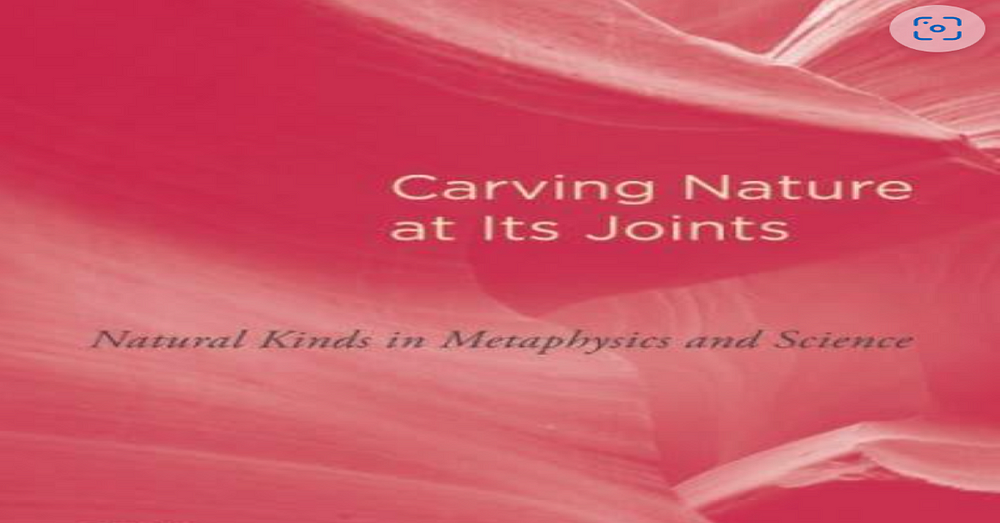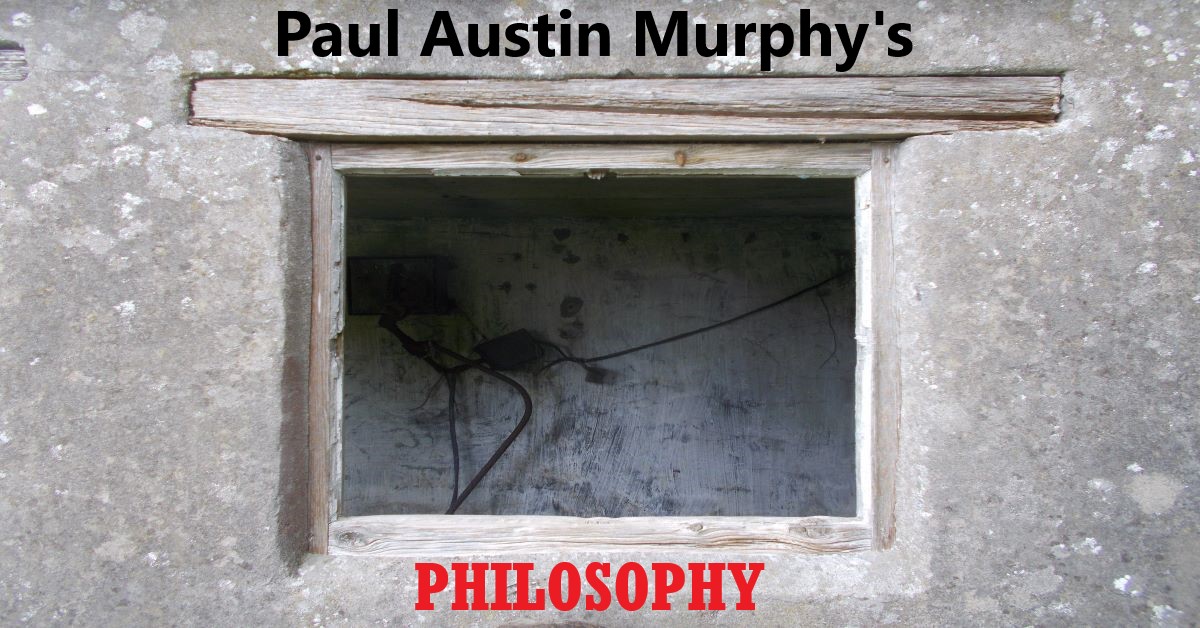The philosopher Roger Scruton argued that “we do not create natural kinds simply by our classifications”. Metaphysicians, then, should “suggest that science look for necessary connections” as one way of “detaching science from our observations”. Why? In order to “attach science to an objective order”.

Why do we accept the statement
(1) “All ravens are black.”
but not
(2) “Non-black things are non-ravens.”?
(1) and (2) are said to be “logically equivalent”. That is, when we “count” all non-black things and all non-ravens, what are we left with? We’re left with black ravens. Thus, we arrive back at (at least in a sense) the statement “All ravens are black”. That’s why they the two statements are said to be logically equivalent. So if something (or anything) is a non-black thing, then it can’t be a raven. And if anything is a non-raven, then (well) it can’t be a raven. Thus, a blue bird isn’t a raven. A banana isn’t a raven. Get it?
This is all part of the ‘Raven paradox’ issue, as expressed in the following way:
“The raven paradox [] is a paradox arising from the question of what constitutes evidence for the truth of a statement. Observing objects that are neither black nor ravens may formally increase the likelihood that all ravens are black even though, intuitively, these observations are unrelated.”
[I personally have a problem with the idea that the statements “All ravens are black” and “Non-black things are non-ravens” are logically equivalent and scientific. They certainly aren’t non-logically equivalent or semantically equivalent. However, these issues must be discussed elsewhere; though there’s been a huge debate on black ravens.]
More relevantly, all this talk about black crows usually occurs — and perhaps must occur — within the context of natural kinds and essences.
The 19th-century English philosopher J.S. Mill (1806- 1873), for example, believed that the world contains (natural) kinds. That is, he believed that we don’t create or “invent” these kinds. They’re actually there in the world and therefore mind-independent.
Prima facie, this talk of mind-independence may seem to go against Mill’s own empiricism (or phenomenalism). So perhaps Mill wouldn’t have used the term “mind-independence” in this context. Perhaps, instead, he’d have used his own much-quoted words: “the permanent possibility of sensation”. That is, if we were to observe a natural kind like a raven, then we’d note properties x, y and z.
So what binds kinds together?
According to Mill, it’s their “common nature”.
Of course ravens and other biological species aren’t the only natural kinds.
Gold and water are also natural kinds. Perhaps it should be said that collections of H₂O molecules, rather than water, is a natural kind. That’s because the word “water” usually refers to secondary properties or to John Locke’s “nominal essences” (which, according to Locke, are based on our “experiences” and on the “common names” we use).

The English philosopher Roger Scruton (1944–2020) argued (in his book Modern Philosophy) that “we do not create the kind water simply by our classifications”. However, can’t it be argued that we only (as it were) get to water (as water) through our classifications? And if we only get to water (at least scientifically and philosophically) through our classifications, then perhaps, in a strong sense, we do actually create that natural kind in that we can only know and observe it (i.e., qua water) through such classifications.
In any case, the words “real essences are the thing(s) that makes a thing a thing” don’t really get us anywhere.
So Scruton explains what a real essence is.
But firstly, let’s take the nominal essence of diamonds.
Scruton argues that laypersons “pick out diamonds by means of their hardness and transparency”. Scientists, on the other hand, have no time for these properties. According to Scruton, hardness and transparency are only “interest-relative”; as well as being mind-dependent and sense-dependent.
According to this story, then, science discovers real essences.
Yet does all that automatically mean that such scientific properties won’t be interest-relative, mind-dependent and sense-dependent?
Not according to many other philosophers — not least those of who deny essences altogether.
So what is the real essence of a diamond?
It is carbon, which, according to Scruton again, is “the very same thing as charcoal”. (See Activated charcoal and “Diamond is composed of the single element carbon.”)
Now how can we flesh out the essence of a diamond?
According to Scruton, we can do so by arguing that the claim that diamonds are essentially carbon “is another instance of an a posteriori necessary truth”. That is, it’s necessary that diamonds are carbon even though we can’t know that a priori. (It’s a scientific discovery.) Alternatively, diamonds are carbon at every possible at which they exist.
The result of this view is that a diamond could lose its “hardness, sheen and transparency — without ceasing to be what it is”. In other words, a diamond wouldn’t lose its essence if it had no (as they’re usually called) contingent properties. However, would a diamond still be “what it is” after losing such properties?
It depends on what the words “what it is” mean.
In addition, if diamonds are nothing more than their essences, then this conclusion must follow by definition.
So could we still have a diamond without its sheen, transparency, hardness, etc. — or would we just have a lump of charcoal?
Certainly, no layperson would recognise it as a diamond.
The raises this question:
Why are the views of all laypersons irrelevant when it comes to establishing what a diamond is?
Moreover, why are sheen, hardness, transparency, etc. irrelevant when it comes to diamonds?
Is a lump of charcoal really a lump of diamond?
More generally, natural kinds became fashionable (roughly in the late 1960s and after Saul Kripke’s work) in analytic philosophy after a long period (at least in some quarters) of criticism of metaphysics (i.e., not only from the logical positivists). More particularly, that criticism included much anti-essentialism. (see ‘Essentialism’ and ‘Non-Essentialism’.)
So what new brand of metaphysics is all this a reference to?
Firstly, such metaphysicians (according to Scruton) “suggest[ed] that science looks for necessary connections”. Does that mean the necessary connections between natural kinds? Does it mean that that the necessary connections between natural kinds are themselves natural kinds? And/or does it mean that there are necessary connections between the (essential) properties which constitute natural kinds?
Moreover, is it really the case that (as Scruton put it) “it is the task of science to discover” these necessary connections?
According to some metaphysicians, the postulation — or actuality — of natural kinds and their essences increased the possibility of objectivity in science. That is, we can have objectivity (only?) if we can discover natural kinds, essences and necessary connections. In addition, this interest in natural kinds and necessary connections helped “detach [science] from our observations and attach it to an objective order”.
So is science (well, physics) really detached from our observations?
It can easily be accepted that observations (or experiences) aren’t everything in science because of the fundamental importance of both theory and mathematics. However, surely observations must account for something. Indeed perhaps observations still account for a hell of a lot!







No comments:
Post a Comment